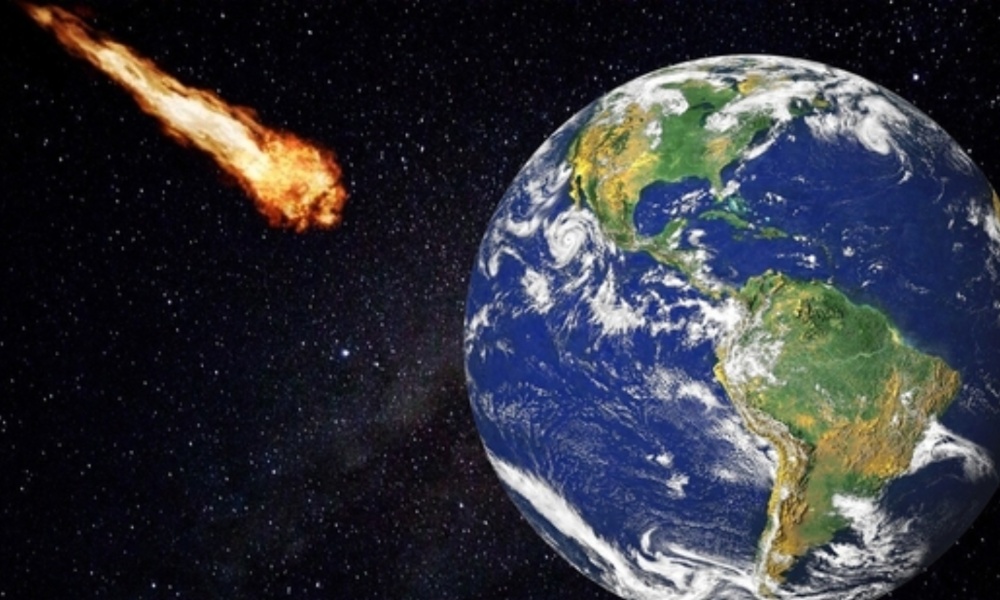Science & Technology
Big cats in urban jungle: LA mountain lions, Mumbai leopards

Los Angeles and Mumbai, India, are the world’s only megacities of 10 million-plus people where large felines — mountain lions in one, leopards in the other — thrive by breeding, hunting and maintaining territory within urban boundaries.
Long-term studies in both cities have examined how the big cats prowl through their urban jungles, and how people can best live alongside them — lessons that may be applicable to more places in coming decades, AP reported.
“In the future, there’s going to be more cities like this, as urban areas further encroach on natural habitats,” said biologist Audra Huffmeyer, who studies mountain lions at the University of California, Los Angeles. “If we want to keep these large carnivores around on the planet, we have to learn to live with them.”
Twenty years ago, scientists in Los Angeles placed a tracking collar on their first cat, a large male mountain lion dubbed P1, that defended a wide swath of the Santa Monica Mountains, a coastal range that lies within and adjacent to the city.
“P1 was as big as they get in southern California, about 150 pounds,” said Seth Riley, a National Park Service ecologist who was part of the effort. “These dominant males are the ones that breed — they won’t tolerate other adult males in their territory.”
With GPS tracking and camera traps, the scientists followed the rise and fall of P1’s dynasty for seven years, through multiple mates and litters of kittens. “2009 was the last time we knew anything about P1,” said Riley. “There must have been a fight. We found his collar, blood on a rock. And never saw him again. He was reasonably old.”
Since then, Riley has helped collar around 100 more mountain lions in Los Angeles, building a vast database of lion behavior that’s contributed to understanding how much territory the cats need, what they eat (mostly deer), how often they cross paths with people and what may imperil their future, AP reported.
In Mumbai, one of the world’s most densely populated cities, the leopards are packed in, too: about 50 have adapted to a space ideally suited for 20. And yet the nocturnal cats also keep mostly out of sight.
“Because these animals are so secretive, you don’t know much about them. You can’t just observe them,” said Vidya Athreya, director of Wildlife Conservation Society in India and part of a research team that recently fitted five leopards with tracking collars.
The leopards’ core range is centered around Sanjay Gandhi National Park, a protected area boxed on three sides by an urbanized landscape, including a neighborhood that’s home to 100,000 people and nearly a dozen leopards, AP reported.
Researchers tackled specific questions from park managers, such as how the cats cross busy roads near the park.
To get the answer, they collared a big male dubbed Maharaja. They found that it walked mostly at night and traversed over 60 kilometers in about a week, from the park in Mumbai to another nearby. The leopard crossed a busy state highway, using the same spot to pass, on three occasions. It also crossed a railway track.
The path chosen by Maharaja is nearby a new highway and a freight corridor under construction. Researchers said that knowing the big cats’ highway crossing habits can help policy makers make informed decisions about where to build animal underpasses to reduce accidents.
But learning to live alongside cats is not only a matter of infrastructure decisions, but also human choices and education, AP reported.
In Mumbai, Purvi Lote saw her first leopard when she was 5, on the porch of a relative’s home. Terrified, she ran back inside to her mother. But now the 9-year-old says she isn’t as afraid of the big cats.
Like other children, she doesn’t step outdoors alone after dark. Children and even adults travel in groups at night, while blaring music from their telephones to ensure that leopards aren’t surprised. But the most fundamental rule, according to the youngster: “When you see a leopard, don’t bother it.”
Leopards in Mumbai adapted to mainly hunt feral dogs that frequent garbage dumps outside the forest and mostly attacked people when cornered or attacked. But in 2010, 20 people in Mumbai died in leopard attacks, said Jagannath Kamble, an official at Mumbai’s protected forest.
Officials roped in volunteers, nongovernmental groups and the media for a public education program in 2011. Since then, fatalities have dropped steadily and no one has been killed in an attack since 2017, AP reported.
In Los Angeles, there have been no human deaths attributed to mountain lions, but one nonfatal attack on a child occurred in 2021.
Both cities have learned that trying to capture, kill or relocate the cats isn’t the answer, AP reported.
“Relocation and killing makes conflict worse,” said Beth Pratt, California regional director at National Wildlife Federation. “It’s better to have a stable population, than one where hierarchies and territories are disrupted.”
Avoidance is the safest strategy, she said. “These big cats are shy — they tend to avoid human contact as much as they can. They’re really extreme introverts of the animal kingdom.”
Science & Technology
Meta releases new AI model Llama 4
Meta said in a statement that the Llama 4 Scout and Llama 4 Maverick are its “most advanced models yet” and “the best in their class for multimodality.”

Meta Platforms on Saturday released the latest version of its large language model (LLM) Llama, called the Llama 4 Scout and Llama 4 Maverick.
Meta said Llama is a multimodal AI system. Multimodal systems are capable of processing and integrating various types of data including text, video, images and audio, and can convert content across these formats.
Meta said in a statement that the Llama 4 Scout and Llama 4 Maverick are its “most advanced models yet” and “the best in their class for multimodality.”
Meta added that Llama 4 Maverick and Llama 4 Scout will be open source software. It also said it was previewing Llama 4 Behemoth, which it called “one of the smartest LLMs in the world and our most powerful yet to serve as a teacher for our new models.”
Big technology firms have been investing aggressively in artificial intelligence (AI) infrastructure following the success of OpenAI’s ChatGPT, which altered the tech landscape and drove investment into machine learning.
The Information reported on Friday that Meta had delayed the launch of its LLM’s latest version because during development, Llama 4 did not meet Meta’s expectations on technical benchmarks, particularly in reasoning and math tasks.
The company was also concerned that Llama 4 was less capable than OpenAI’s models in conducting humanlike voice conversations, the report added.
Meta plans to spend as much as $65 billion this year to expand its AI infrastructure, amid investor pressure on big tech firms to show returns on their investments.
Science & Technology
‘Massive cyberattack’ brings down Elon Musk’s X
Digital Trends reported Tuesday that there are reports suggesting X is still having issues

Social media platform X went down intermittently on Monday, with owner Elon Musk blaming an unusually powerful cyberattack.
“We get attacked every day, but this was done with a lot of resources. Either a large, coordinated group and/or a country is involved,” Musk said in a post on X on Monday.
He did not clarify exactly what he meant by “a lot of resources” and his comments drew skepticism from cybersecurity specialists, who pointed out that attacks of this nature — called denials of service — have repeatedly been executed by small groups or individuals.
X faced intermittent outages, according to Downdetector, Reuters reported.
Digital Trends meanwhile reported Tuesday that there are reports suggesting X is still having issues.
Internet industry experts have said X was hit by several waves of ‘denial of service’ throughout Monday.
Musk said in an interview with Fox Business Network’s Larry Kudlow the cyberattack came from IP addresses originating in the Ukraine area.
An industry source told Reuters he disputed Musk’s account, saying that large chunks of the rogue traffic bombarding X could be traced back to IP addresses in the United States, Vietnam, Brazil and other countries, and that the amount of rogue traffic coming directly from Ukraine was “insignificant.”
In any case, denial of service attacks are notoriously hard to trace back to their authors and the IP addresses involved rarely provide any meaningful insight into who was behind them, Reuters reported.
Musk has joined U.S. President Donald Trump, whom he serves as an adviser, in criticizing Ukraine’s continued efforts to fight off a Russian invasion.
Musk said on Sunday that Ukraine’s front line “would collapse” without his Starlink satellite communications service, though he said he would not cut off Ukraine’s access to it.
Science & Technology
NASA says ‘city killer’ asteroid has a 3.1 % chance of striking Earth in 2032
Despite the rising odds, experts say there is no need for alarm

An asteroid that could level a city now has a 3.1-percent chance of striking Earth in 2032, according to NASA data released Tuesday — making it the most threatening space rock ever recorded by modern forecasting.
Despite the rising odds, experts say there is no need for alarm. The global astronomical community is closely monitoring the situation and the James Webb Space Telescope is set to fix its gaze on the object, known as 2024 YR4, next month.
“I’m not panicking,” Bruce Betts, chief scientist for the nonprofit Planetary Society told AFP.
“Naturally when you see the percentages go up, it doesn’t make you feel warm and fuzzy and good,” he added, but explained that as astronomers gather more data, the probability will likely edge up before rapidly dropping to zero.
2024 YR4 was first detected on December 27 last year by the El Sauce Observatory in Chile.
Astronomers estimate its size to be between 130 and 300 feet (40–90 meters) wide, based on its brightness. Analysis of its light signatures suggests it has a fairly typical composition, rather than being a rare metal-rich asteroid.
The International Asteroid Warning Network (IAWN), a worldwide planetary defense collaboration, issued a warning memo on January 29 after the impact probability had crossed one percent. Since then, the figure has fluctuated but continues to trend upward.
NASA’s latest calculations estimate the impact probability at 3.1 percent, up from 1.6 percent last month, with a potential Earth impact date of December 22, 2032.
Richard Moissl, head of the European Space Agency’s planetary defense office, which puts the risk slightly lower at 2.8 percent told AFP that this “is not a crisis at this point in time. This is not the dinosaur killer. This is not the planet killer. This is at most dangerous for a city.”
If the risk rises over 10 percent, IAWN would issue a formal warning, leading to a “recommendation for all UN members who have territories in potentially threatened areas to start terrestrial preparedness,” explained Moissl.
Unlike the six-mile-wide (10-kilometer-wide) asteroid that wiped out the dinosaurs 66 million years ago, 2024 YR4 is classified as a “city killer” — not a global catastrophe, but still capable of causing significant destruction.
Its potential devastation comes less from its size and more from its velocity, which could be nearly 40,000 miles per hour if it hits.
If it enters Earth’s atmosphere, the most likely scenario is an airburst, meaning it would explode midair with a force of approximately eight megatons of TNT — more than 500 times the power of the Hiroshima bomb.
But an impact crater cannot be ruled out if the size is closer to the higher end of estimates, said Betts.
The potential impact corridor spans the eastern Pacific, northern South America, the Atlantic, Africa, the Arabian Peninsula, and South Asia — though Moissl emphasized it is far too early for people to consider drastic decisions like relocation.
The good news: there’s ample time to act.
NASA’s 2022 DART mission proved that spacecraft can successfully alter an asteroid’s path, and scientists have theorized other methods, such as using lasers to create thrust by vaporizing part of the surface, pulling it off course with a spacecraft’s gravity, or even using nuclear explosions as a last resort. — Agence France-Presse
-

 Sport5 days ago
Sport5 days agoAfghanistan’s national futsal team heads to Morocco
-

 Sport4 days ago
Sport4 days agoAfghanistan win U-19 cricket series despite rain-impacted loss to Nepal
-

 Latest News5 days ago
Latest News5 days agoPakistan expels thousands of Afghan nationals in fresh drive, says UNHCR
-

 Latest News4 days ago
Latest News4 days agoIran’s Vice President advocates stronger ties with neighbors, especially Afghanistan
-

 Regional4 days ago
Regional4 days agoUS energy secretary sees tighter sanctions on Iran without deal
-

 Latest News4 days ago
Latest News4 days agoTrump administration moves to restore some terminated foreign aid programs, sources say
-

 Latest News4 days ago
Latest News4 days agoBigdeli updates Iran’s FM on current status of bilateral relations with Kabul
-

 Latest News4 days ago
Latest News4 days agoAWCC distributes free SIM cards to returning refugees from Pakistan
























